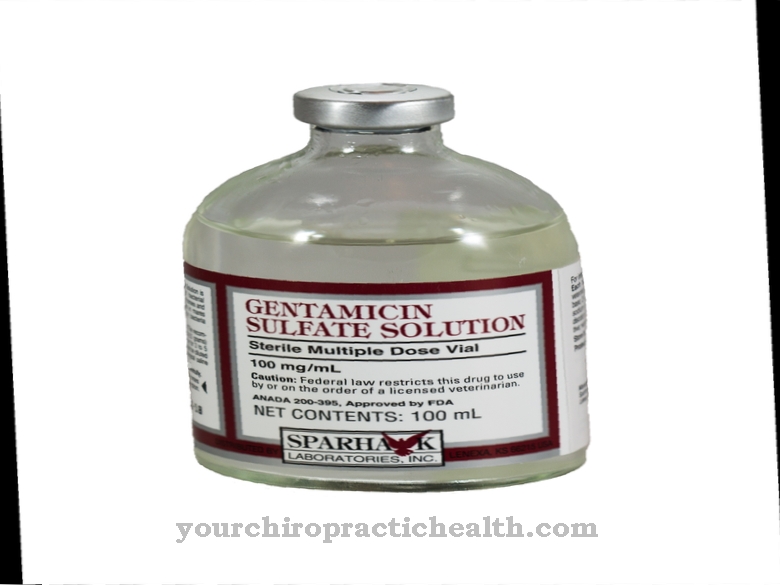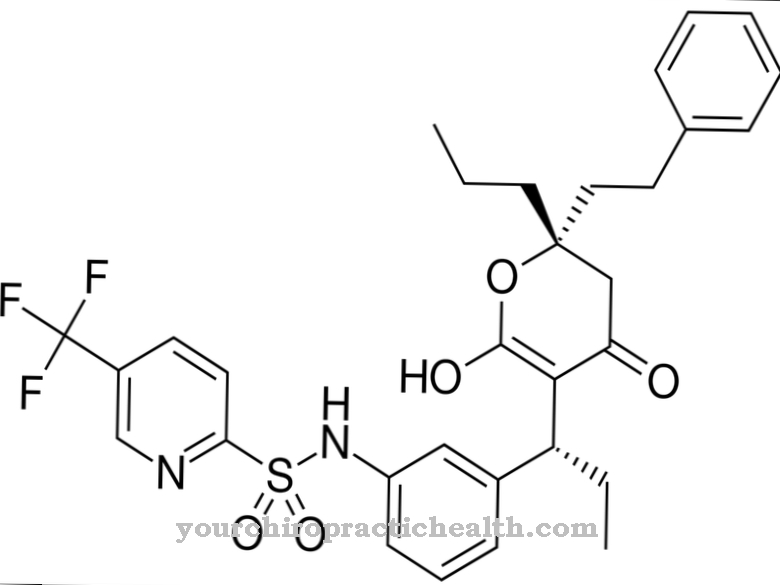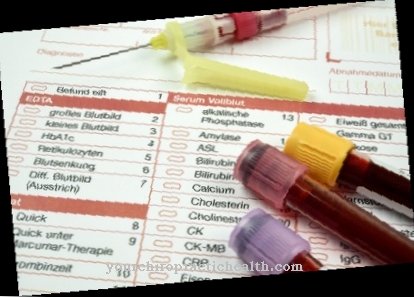Beclometasone is one of the many active ingredients used against bronchial asthma. It belongs to the younger generation of glucocorticoids, which, thanks to their localized effect, have fewer side effects than other asthma drugs. Therefore it can also be used in children.
What is beclometasone?

Beclometasone is an active ingredient that belongs to the group of inhaled glucocorticoids. The synthetically produced substance has the molecular formulas C24H32O4 and C22H29ClO5 and is only used in prescription and pharmacy-only drugs.
Beclometasone has anti-allergic, anti-inflammatory and immune-suppressive effects. In medicines it is in the form of beclometasone dipropionate. It is a white, almost insoluble crystalline powder. It is in a solid state at room temperature. Its melting point is 212 ° C.
Beclometasone dipropionate is one of the most effective substances used to treat asthma and is also used for allergic rhinitis. Its anti-inflammatory effect is based on the fact that the active ingredient attaches to intracellular glucocorticoid receptors. At very high doses, however, it can have negative effects on the body and psyche.
Pharmacological effect
Beclometasone has vasoconstrictive, anti-inflammatory, anti-allergic and immunosuppressive properties. It allows the inflamed mucous membranes to swell more quickly so that the airways become free again. The active ingredient reduces the formation of bronchial mucus and at the same time liquefies it so that it can be coughed up more easily. It also has a relaxing effect on the bronchial muscles.
In patients with an allergic rhinitis, beclometasone reduces the formation of secretions in the nose and thus ensures unhindered nasal breathing. Since most of the active substance remains on the mucous membranes, the risk of side effects is reduced.
Beclometasone is more effective than other glucocorticoids in respiratory diseases. It inhibits the production of prostaglandins in the body and limits the formation of immune cells. In this way, inflammatory processes can be fought quickly and reactions of the immune system suppressed. When used by inhalation, beclometasone is only slowly absorbed by the alveoli and therefore has a long-lasting effect.
Beclometasone is used as a long-term treatment for allergic rhinitis, bronchial asthma, sinusitis, chronic bronchitis and chronic obstructive pulmonary diseases such as COPD. As an acute remedy, it can be used for smoke inhalation and poison accidents, as it quickly relieves shortness of breath and prevents lung damage.
Since the active ingredient has a very limited local effect, little of it gets into the blood. In the blood, about 87 percent of it binds to blood plasma proteins. Beclometasone-17,21-dipropionate is immediately metabolized in the liver to beclometasone-21-monopropionate and beclometasone (free alcohol). It is broken down in the body by certain enzymes (esterases). The metabolic breakdown products are excreted from the body through urine and stool.
Medical application & use
As a means of inhalation (for respiratory diseases) it is used twice a day. After ingestion, the patient should definitely have a bite to eat or rinse his or her throat thoroughly. Otherwise thrush (a fungal disease) could develop.
The drug with beclometasone has a delayed effect and only reaches its full effectiveness after about 48 hours. It is used as a long-term therapeutic and is not suitable for acute asthma attacks. As its systemic effects are very small, it can also be prescribed to children from 4 years of age who suffer from bronchial asthma. You will take beclometasone under adult supervision. In children, regular monitoring of child growth should be carried out parallel to treatment. If stunted growth occurs, the dose must be reduced immediately or another treatment method used. The dosage is based on the information on the package insert.
Those suffering from respiratory diseases take 1 to 2 strokes in the morning and evening. Regular use is recommended so as not to jeopardize the success of the treatment. The daily dose is 0.4 to 0.6 mg in adults and lower in children.
For beclometasone nasal sprays, the recommended dose is 200 micrograms per day, with the dose being individually tailored to the patient. Beclometason is available as a single and a combination preparation and is sold, for example, under the trade names Qvar®, Beclo Orion®, Beconase®, Bronchocort®, Aerocortin®, RatioAllerg®, Rhinivict®, Ventolair®, Inuvair® and Formodual®.
Risks & side effects
The side effects most frequently observed when taking beclometasone preparations include oral thrush, cough, irritation of the throat mucous membrane, hoarseness, infections, indigestion, paradoxical bronchospasm, glaucoma, cataracts, headache, dry mouth and inflammation in the Oropharynx.
Growth retardation may occur in children. Therefore it should only be used in the lowest therapeutically effective dosage. If a paradoxical bronchospasm occurs, use of beclomethasone should be stopped immediately.
Less often there are disorders of the sense of smell and taste, nosebleeds, skin rashes, itching, urticaria, reduced stress resistance, reduced bone density, as well as swelling and reddening of the face, eyes, throat and lips.
Used in higher doses, it can affect the entire body and even lead to impaired kidney function, behavioral disorders and fat redistribution in the body. If other corticosteroids and sympathomimetics are administered at the same time, the agent can increase their effect.
Beclometasone should not be used in respiratory tract infections, eye infections, pulmonary tuberculosis, hypersensitivity to the active substance, pregnancy and breastfeeding. Since it can damage the adrenal function in the unborn child, the doctor should only prescribe the drug after carefully weighing the risks and benefits. Like other glucocorticoids, it can get into breast milk. Therefore, breastfeeding women who have to take the drug as long-term therapy or in higher doses should stop breastfeeding immediately.












.jpg)



.jpg)










.jpg)
